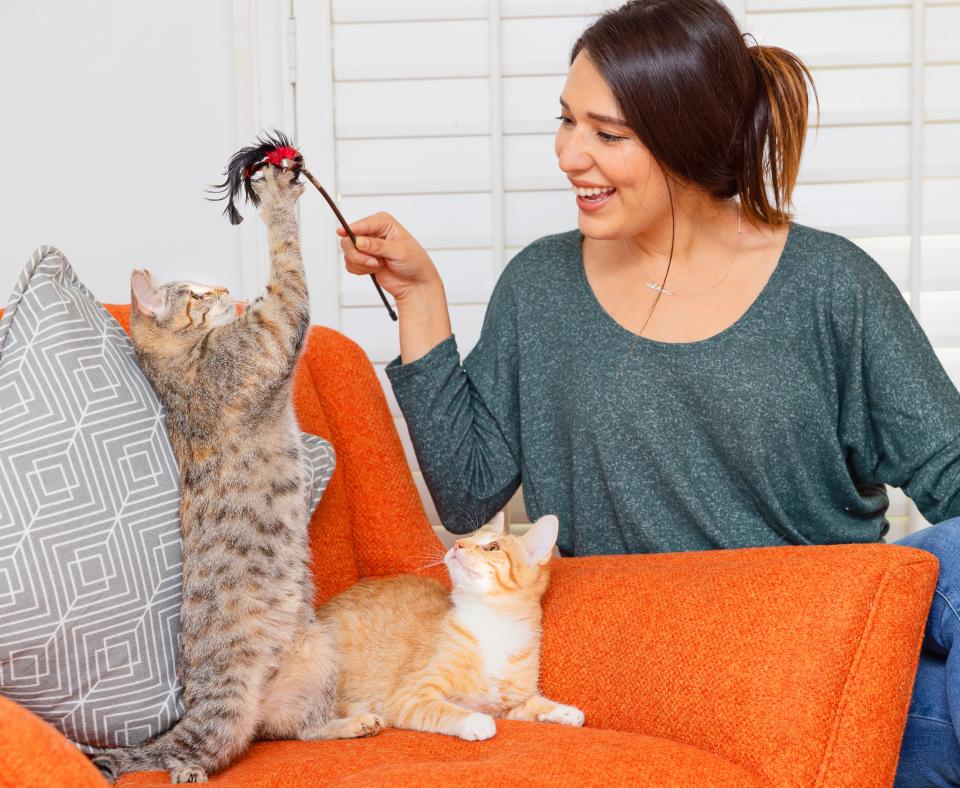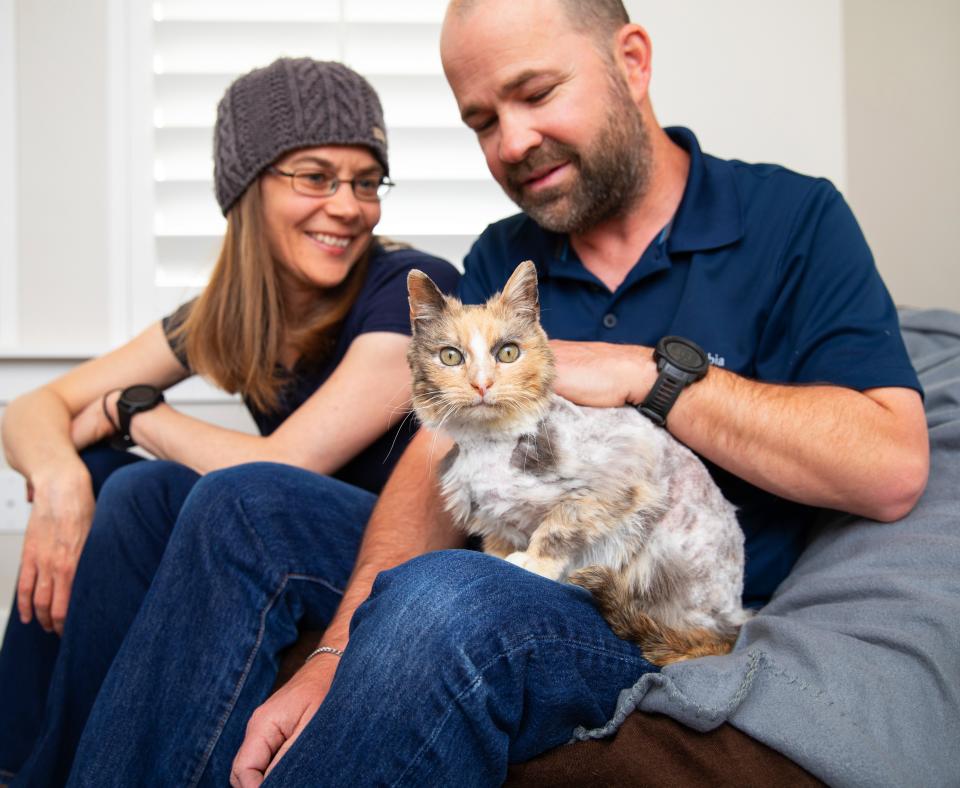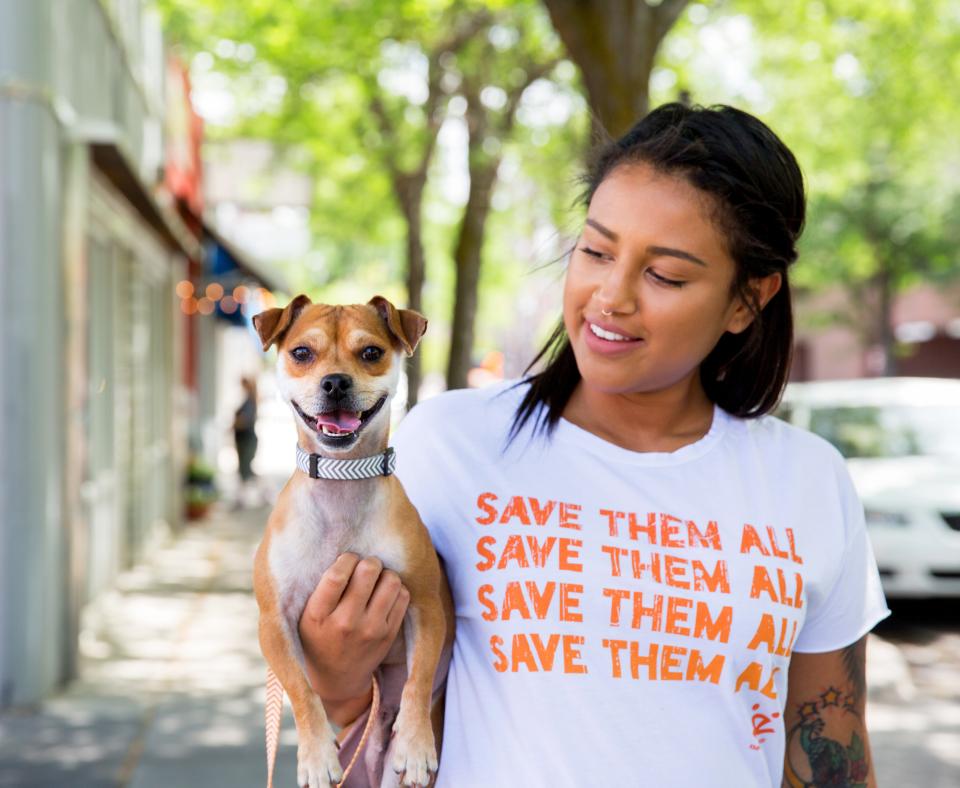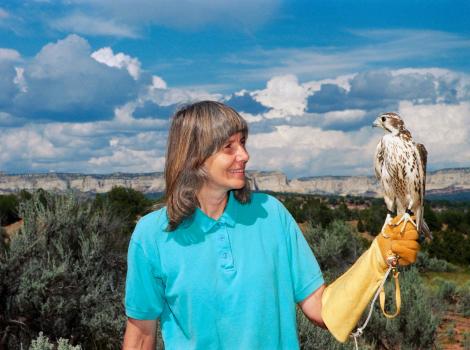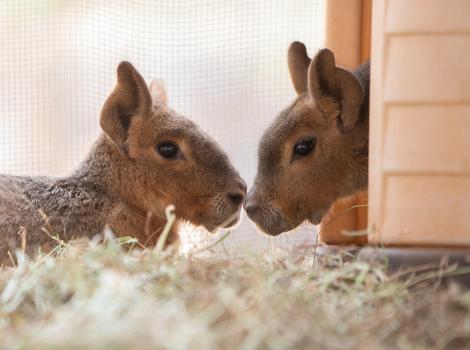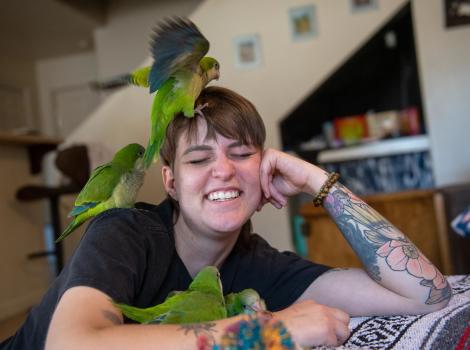Kazoo the crow becomes a teacher
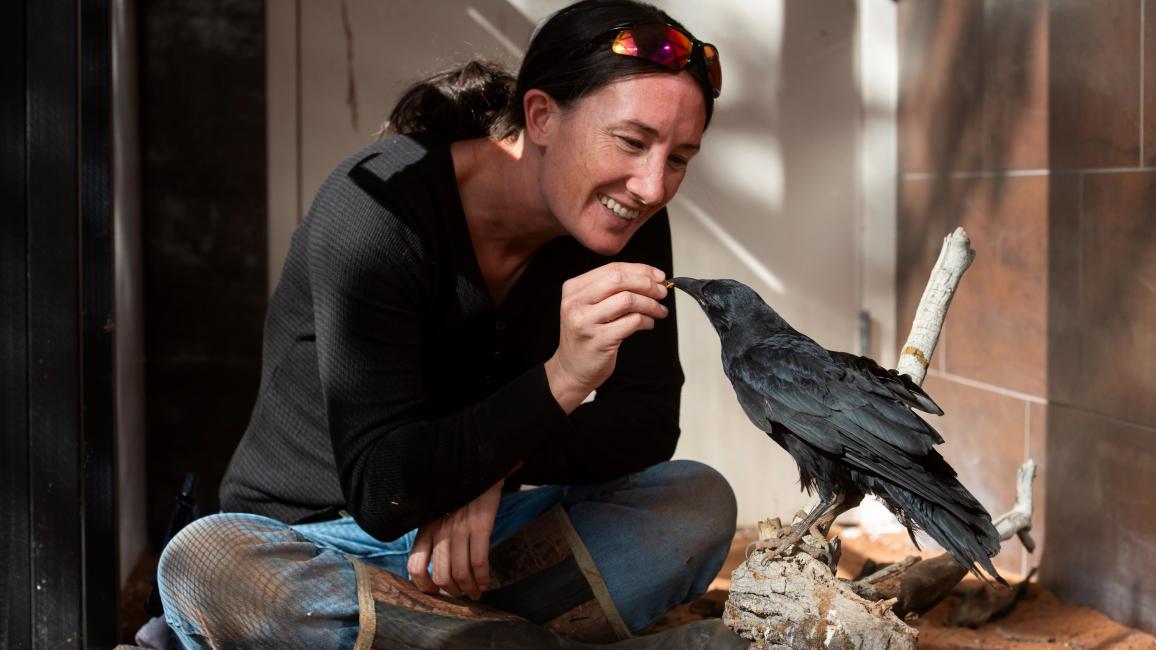
High up in the beautiful Pine Valley Recreation Area of southern Utah, a family watched a gathering of crows outside their house. They noticed a baby crow on the ground. The parents were still feeding her, but as they watched this activity for a couple of weeks, it seemed the youngster was struggling to learn to fly.
Gradually, they began to suspect that something was not quite right with the young bird. They noticed that her right wing seemed to be hanging and that something was off about the bird’s right foot. They started to realize that they would need to intervene in some way.
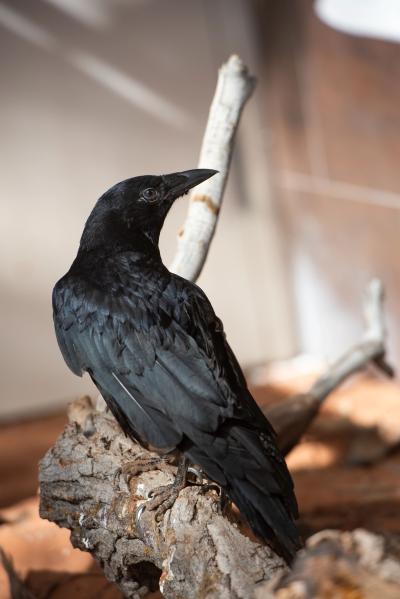
Surgery for a young crow
Having made the decision that they would have to help, that afternoon they brought the young crow, who was only a couple months old, to Wild Friends, the state and federally licensed wildlife rehabilitation area of Best Friends Animal Sanctuary. Lauren Ross, subpermittee and Best Friends lifesaving and care specialist, was waiting to receive her.
During the physical exam, Lauren observed that indeed the crow was holding her right wing and right leg in an odd way, and then she found a big cyst on the right wing in between the tendons. The caregivers started her on antibiotics.
[Life in captivity? Quoth the ravens, ‘Nevermore’]
She was taken to Best Friends Animal Clinic at the Sanctuary, where the veterinary team performed two surgeries and ended up removing a thorn that had gotten lodged in the crow’s wing.
Following the surgeries, she had much better control of her right foot, and after a little while she seemed to feel much better.
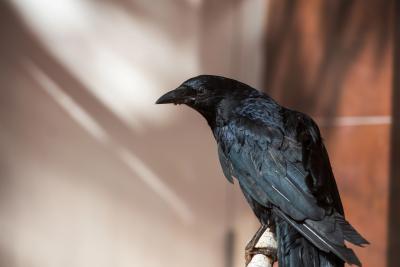
Recovery at the Sanctuary
At first, she was kept in a large enclosure with the hope that she might get her flight muscles back — which seemed like it might be possible — and then perhaps be released back to the wild. But that was not meant to be. The young bird was doing well in all respects, but it became clear that she was not going to be able to fly.
However, because she was so calm and well-adjusted by now to her caregivers, she might have a good future as an educational bird. She was used to people and not stressed by their presence. Being an educational bird would be a good opportunity for the young crow; she’d be able to live a happy life while teaching visitors about wildlife.
As she recovered, caregivers learned more about Kazoo, as the crow was now called. When she started making weird noises to entertain herself, the sounds were a lot like “kazoo,” and that was how she got her name.
She’s very calm around people, and she loves watching children’s cartoons, including The Magic School Bus. When one of the kids on the show said “Wow!” Kazoo echoed the sound with a little “wow” of her own.
Becoming a teaching bird
Before Kazoo could legally be kept as an educational bird, she would need a federal permit. All native wild birds are protected, and it’s illegal to keep any wild bird without a federal permit.
With her permit approved, Kazoo is all set now to launch her teaching career — helping people to learn more about the nature of wild birds, especially crows. Having been around people for a while and gotten to know them, she’s not afraid and will easily adjust to her new role as teacher.
Although Kazoo is very charming and well adapted to the presence of people, she’s never treated like a pet. She is always respected like the wild bird that she is. Licensed wildlife rehabilitators take great care to treat wild birds with respect. They are not petted or handled like a pet.
[Meet the feathery new educators at Wild Friends]
That’s important because wild birds, even educational ones, must always be treated appropriately. They are not pets, and it’s essential that we humans respect their wild nature, recognizing a clear distinction between a pet and a wild animal.
In the spring, when it warms up a bit, Kazoo will be housed with another female, Ebony, and her friend Mr. Jones. They’re all educational crows with federal permits. This trio will all be able to live happily and at ease in their professional life of teaching humans about the amazing nature of wild birds — and crows especially.
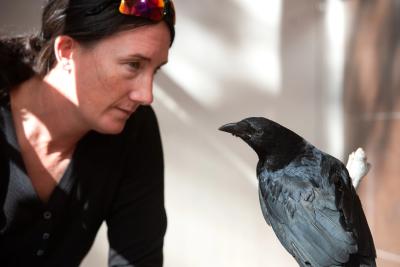
Let's make every shelter and every community no-kill by 2025
Our goal at Best Friends is to support all animal shelters in the U.S. in reaching no-kill by 2025. No-kill means saving every dog and cat in a shelter who can be saved, accounting for community safety and good quality of life for pets.
Shelter staff can’t do it alone. Saving animals in shelters is everyone’s responsibility, and it takes support and participation from the community. No-kill is possible when we work together thoughtfully, honestly, and collaboratively.
